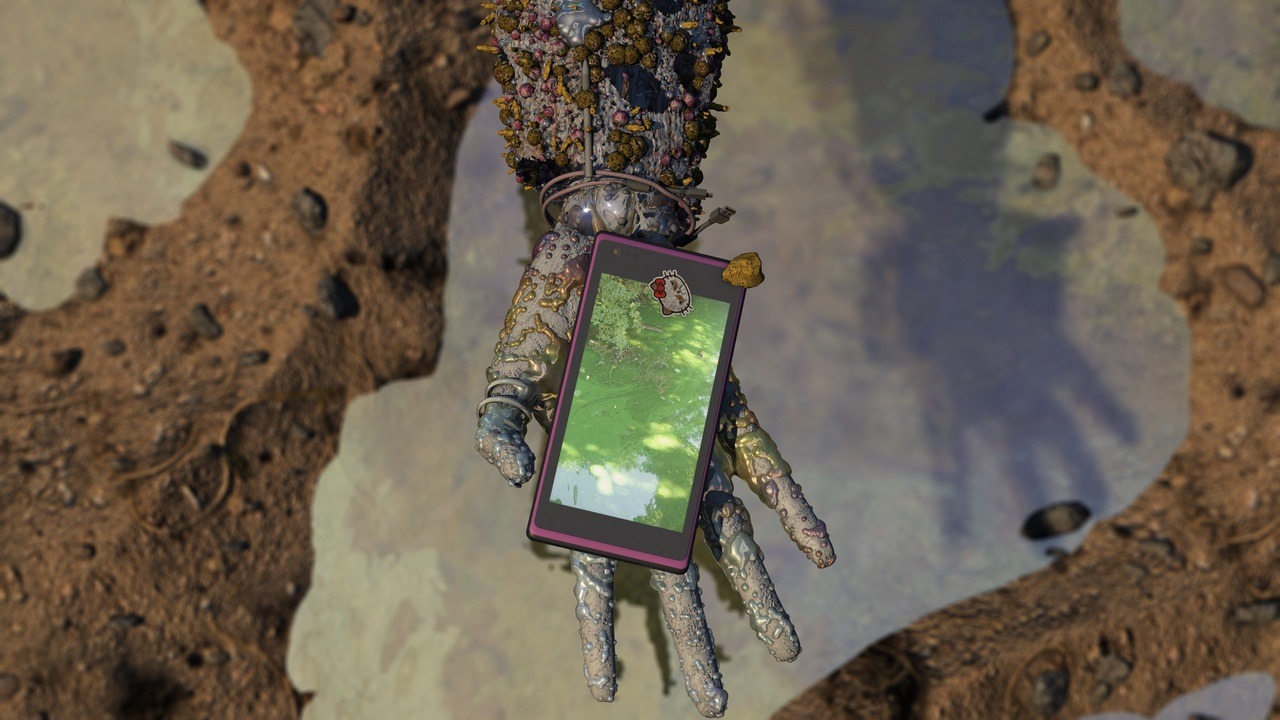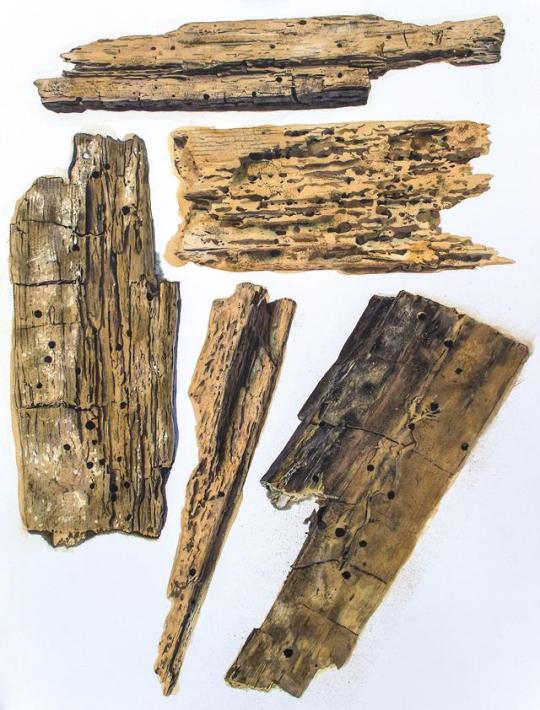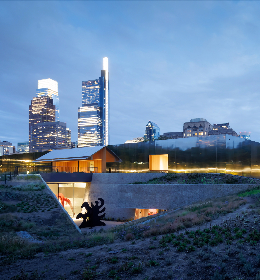They spent their days walking on the mountainside, uncovering tiny bones and other natural phenomena, which were carried back to the studio for further investigations and inspiration; these items, which were small, perhaps insignificant to most, were obvious and grand to them as they walked across both the undeveloped and beaten mountain paths. A combination of elements such as physical evidence of life forms and geological setting, painting, and animation conjoin to form their hybrid representations in art. Their work implies the vast lifetime of our planet and its productions, with all elements equal.
Their process is not so much an art practice, which suggests a separate or contrived act, but more clearly described as a way of being with a daily harvesting, building, and devouring of locally obtained matter. They form the artist duo, ‘nabbteeri’, a fusing of ideology, perception and expression, with an inherent humility and respect for their environs and the smallest creatures with which we all co-habit. They make drawings and animations fusing what is perceived, what is invisible to our human eyes, and what is imagined in a future where humans are just another part of the ecosystem.

nabbteeri, Ethnographies of a homespun spinelessness cult and other neighbourly relations: Gingerbread house (2019)
This year, nabbteeri, are showing their work in a group exhibition alongside Ane Graff and Ingela Ihrmanin at the Venice Biennale’s Nordic Pavilion.
“The work continues to speculate with our relations with our bodies and the other platforms that we share with other beings. We have then collected some threads that tangle into some kind of a friendly apocalypse,” explains the duo.
With their combined work entitled Ethnographies of a Homespun Spinelessness Cult and Other Neighbourly Relations, and independently entitled Gingerbread House, Dead Hedge, and Compost, the visitor can already perceive nabbteeri’s sensitivity to nature, decay, and to invertebrates. Gingerbread House combines sandbags, bird spikes, post-consumer textiles, water and root cuttings from local flora, a two channelled video installation, watercolor cutouts of woodworm Anobium punctatum’s presence, and even woodworm frass powder from the walls of the artists' own house. Dead Hedge incorporates branches, which are pressed inside a portable geodesic dome, creating a nest for different species to inhabit, whilst Compost is even more diverse with discarded mooring dolphins partly digested by naval shipworm Teredo navalis, organic surplus of the Giardini flora, and nitrophilous plants.

nabbteeri, Ethnographies of a homespun spinelessness cult and other neighbourly relations: Gingerbread house 2019 in a detail view, watercolour on paper
The works bring the outdoors into the space, which is already inhabited by three living trees and spreads itself to the outside, creating a cushion of distinction between the frontiers of the exhibition and who its visitors will be. All three works embrace the living forms that might wander or be compelled to enter, bringing with them a creative force for decay and rebirth. Plants will grow, birds will nest, insects and humans will observe and appreciate all the details. There is an emphasis on how we are a part of everything, and how everything is of the same importance all at once.
When asked what they might share with other artists about their experience creating the work for the biennial, nabbteeri replied, “The production schedule can be challenging, and the overall process has been rather intense. But it's a great pleasure to work with so many motivated people. We recommend travelling slowly, and critically considering the overall impact of the productions, to start changing the system from the inside.”
The Nordic pavilion is curated this year by Leevi Haapala & Piia Oksanen with the title of Weather Report: Forecasting Future, which implies that the works are indeed predictions of what might come if the weather, nature, and culture, continue in the same direction. What does the future hold for nabbteeri? “We look forward to spending the summer in our garden. Some old windows need to be repaired, too”, they reply modestly.









